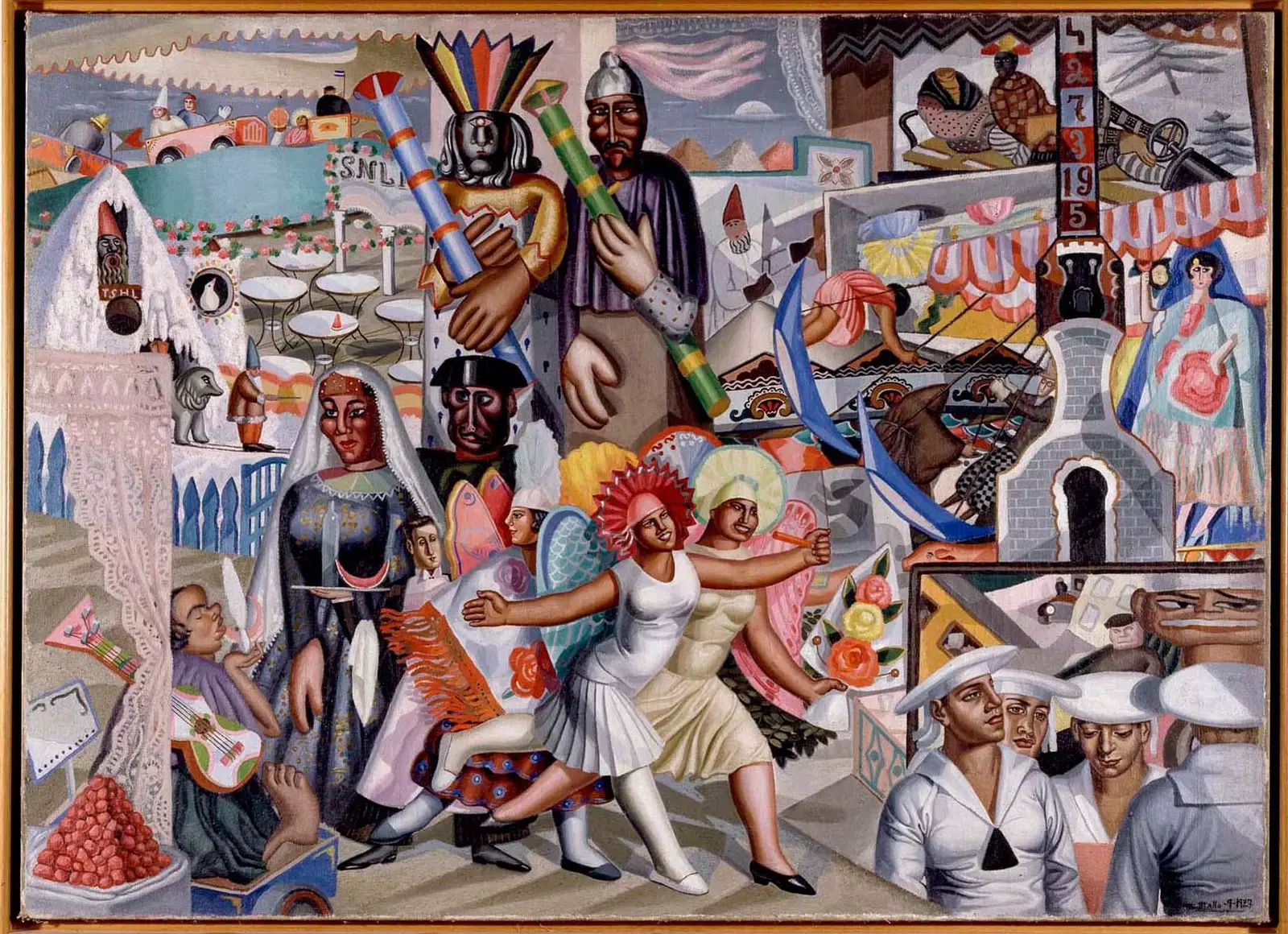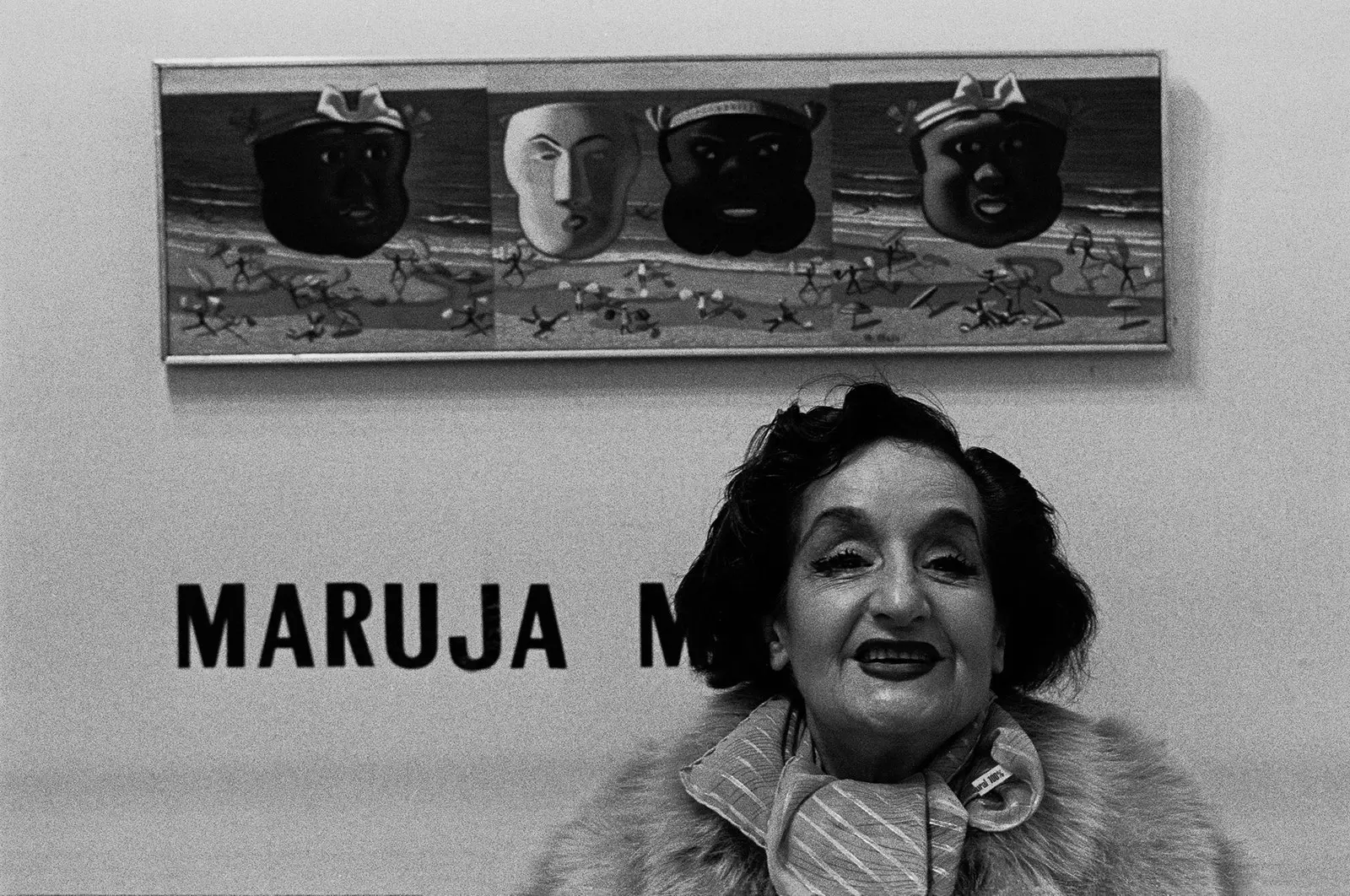
'La verbena', by Maruja Mallo
There are better and worse, but the best verbena is always the one that comes out of our memory. With that perfect verbena -or with its end, rather- I started a book published shortly after Maruja Mallo returned to Spain from exile: “They walk slowly on a bed of confetti and streamers, one starry September night, along the deserted street adorned with a ceiling of garlands, colored paper and broken lanterns: last night of the Fiesta Mayor (the goodbye confetti, the candle waltz) in a popular and suburban neighborhood, at four in the morning, everything is over”.
It was Last afternoons with Teresa, by Juan Marsé , who had decided to inaugurate the best Spanish novel of the second half of the 20th century with that moment fixed in the memory, a moment of sublime happiness of two lovers for whom things will never be the same afterwards.
Something of that is also in this painting that Maruja Mallo (Nursery, Lugo, 1902-Madrid, 1995) painted in 1927. A very important year: so much so that she gave name to a generation of poets, some of which, like Alberti or Garcia Lorca, they formed part of the vital heart of the painter. there was also Salvador Dali, that he had the idea to call her “half angel, half shellfish”. EITHER Luis Bunuel, who was not very amused by this invention of liberated women.
Mallo belonged to a group of those brave women, the Sinsombreros, along with others such as María Zambrano or Margarita Manso. No hat for not wearing it, of course, which at that time was such an unseemly choice that in the very Puerta del Sol they were stoned – so she told it – by passers-by who could not (or did not want) to believe their eyes.
It was not easy to be a woman, and also an avant-garde artist, in the Spain that Primo de Rivera insisted on keeping under control. In a “dictatorship with a king”, as he called it Santos Juliá: the crowned one was Alfonso XIII, who informed his Italian colleague Vittorio Emanuele "I already have my Mussolini" like someone who tells her best friend that she already has a dress for her nephew's communion, and that the price hasn't gone wrong.
After Maruja would travel to Paris, and she would meet the surrealists, and her return to Madrid would last her until the Civil War, which made her leave by legs to a long Latin American exile.
She came back in 1962, She was scared to death because she imagined all kinds of reprisals from the Francoist state, to basically find that the Francoist state did not even know who she was.
We had to wait for the landing the move, which was a long festival actually, so that someone remembered Maruja Mallo again. And that party did rush her to her last dance. With her crazy hair and circus makeup of hers, and with that lynx coat under which she was said to go naked, she walked through all the openings and all the television programs of the moment, and her humanistic and slightly dyslexic lucidity was truly a beacon for the time. In this final stage, she also expanded her fan base, which, as is well known, reaches Pedro Almodóvar, the best toned of the entire celebration.
But, long before all that, Maruja painted a verbena, and she wanted to put everything she could fit into it. The sailors and the flamenco, the civil guard with tricorn and the women with paper hats, the candied almonds and the manila shawls, the giants and the puppets, the friar and the street musician, the fairground attractions and the empty nightstands.
As can be seen, her scene is much more confused than Marsé's, since what Mallo is interested in is not telling the end of anything, but the apogee of everything. But surely she is too a festival of remembrance, because memory is treacherous and there is no verbena in which, like here, it is daytime.
The verbenas of the past force us to wish for those of the future. And, although we know that this golden moment will never be repeated, we are going for it. And also no brakes. What else are we going to do, if it's what we always do.
We don't know when the verbenas will return, or what we will do when they arrive. But neither should we think about being a passenger on the first rocket to Mars if we haven't left our living room. When we meet the other people, and we can again talk to them face to face, we will have already achieved a lot.
And when we play them as our desire and yours, then, oh, then. That is going to be a verbena.
La verbena, by Maruja Mallo, is exhibited in room 203 of the Reina Sofía National Art Center Museum.

Maruja Mallo
